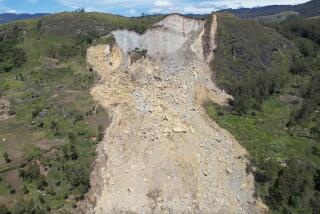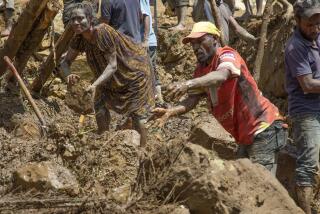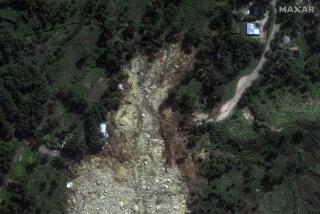A Lesson From the Pacific
There are few places in the world more prone to--and less prepared for--disaster than the Pacific island of New Guinea, where a tsunami this past weekend left more than a thousand dead and many others missing or homeless.
It’s a poor land that sits along the volcanic Ring of Fire, near the conjunction of four tectonic plates and microplates. Over the years, it has suffered eruptions, cyclones, landslides, earthquakes, drought, famine and floods. Many of its people eke out a living by fishing and subsistence farming. Usually, almost impenetrable jungles and swamps push against the coast. For the inhabitants of this sometimes cruel environment, risk is a constant neighbor.
The science of tsunami prediction is iffy at best. Scientists can tell you when an undersea earthquake might trigger one, and they can estimate arrival time at a near or distant shore. But they have little idea whether there will be a wall of water or a wave a few centimeters high.
Last weekend’s was the type that offered the least warning, generated by a magnitude-7 quake just a few miles offshore. Witnesses said just 10 minutes passed before the first of three successively larger waves rolled in.
What isn’t known is how many lives might have been saved if more coastal residents had known to flee to higher ground the moment the earthquake struck. Ten minutes is scarce warning. Fortunately, international relief efforts were quickly launched.
The survivors are not expected to move back to the devastated spit of land they once called home. They won’t have to be paid by the government to relocate; they know better than to stay. Seems that only the residents of the more “advanced” nations insist on rebuilding homes on spots ravaged by fires, floods, mudslides, earthquakes or storms.
More to Read
Sign up for Essential California
The most important California stories and recommendations in your inbox every morning.
You may occasionally receive promotional content from the Los Angeles Times.










